Understanding HVAC Systems
An HVAC (Heating, Ventilation, and Air Conditioning) system is a crucial component of any home or business, providing comfort through the regulation of temperature and air quality. Whether you’re living in a hot or cold climate, the HVAC system is responsible for keeping indoor environments comfortable, efficient, and safe.
What is an HVAC System?
An HVAC system is a network of equipment and technology designed to heat, cool, and ventilate the air inside a building. The system comprises several components that work together to regulate indoor climate and ensure proper air circulation. A well-maintained HVAC system can enhance comfort, energy efficiency, and air quality.
Benefits of Choosing the Best HVAC System
Selecting the best HVAC system offers several key benefits:
- Energy Efficiency: A modern HVAC system will consume less energy, which leads to reduced utility bills.
- Comfort: A well-functioning HVAC system provides consistent temperature control, keeping the indoor environment comfortable throughout the year.
- Air Quality: Proper ventilation and filtration systems help eliminate allergens, dust, and pollutants, promoting healthier indoor air.
- Long-Term Savings: Investing in an efficient and durable HVAC system will save you money on repairs and replacements over time.
Types of HVAC Systems
When it comes to HVAC systems, there are several options available, each tailored to different needs. The right system for your home will depend on factors such as the climate, building size, and energy efficiency requirements.
Central Air Conditioning Systems
What is Central Air Conditioning?
Central air conditioning is one of the most popular and traditional types of HVAC systems. It uses a central unit to cool the air and distribute it through a network of ducts into different rooms. The system consists of a compressor, evaporator coil, condenser, and ducts.
Benefits of Central Air Conditioning Systems:
- Even Cooling: Provides consistent cooling throughout the entire home.
- Energy Efficiency: Modern central AC units are highly energy-efficient and can cool large spaces effectively.
- Quiet Operation: Central AC units operate quietly, making them ideal for homes and businesses that require a peaceful environment.
- Convenience: Centralized control with thermostats makes it easy to manage the temperature in the entire house.
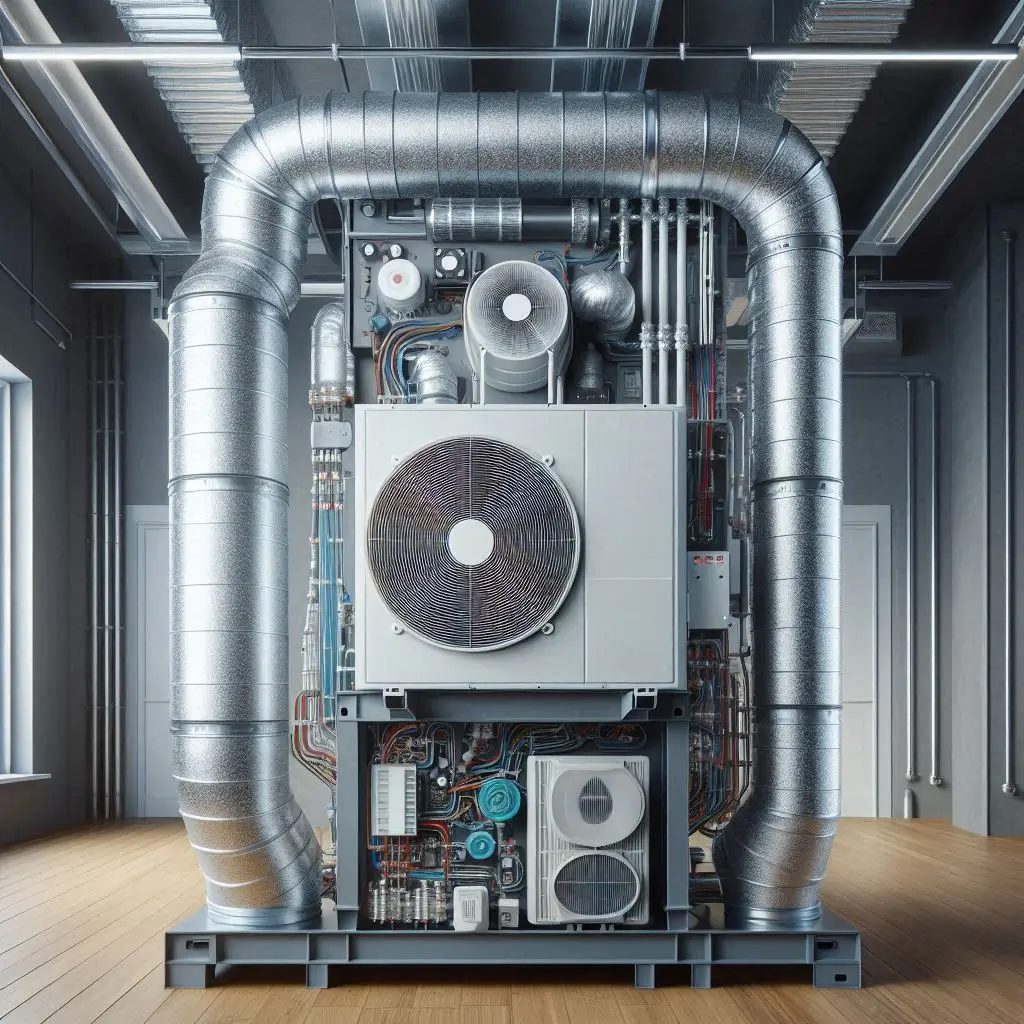
Heat Pumps
What is a Heat Pump?
A heat pump is an energy-efficient HVAC system that can provide both heating and cooling. It works by transferring heat from one place to another, which makes it a versatile option for homes in climates with moderate temperatures.
How Heat Pumps Work:
- Cooling Mode: In the summer, the heat pump extracts warm air from inside the house and expels it outside.
- Heating Mode: During colder months, the process is reversed, and the system extracts heat from the outside air and brings it indoors.
Benefits of Heat Pumps:
- Energy Efficiency: Heat pumps consume less energy than traditional HVAC systems, as they don’t generate heat but transfer it.
- Dual Functionality: Provides both heating and cooling, making it an excellent year-round solution.
- Environmentally Friendly: Since heat pumps don’t burn fossil fuels, they have a lower environmental impact compared to conventional systems.
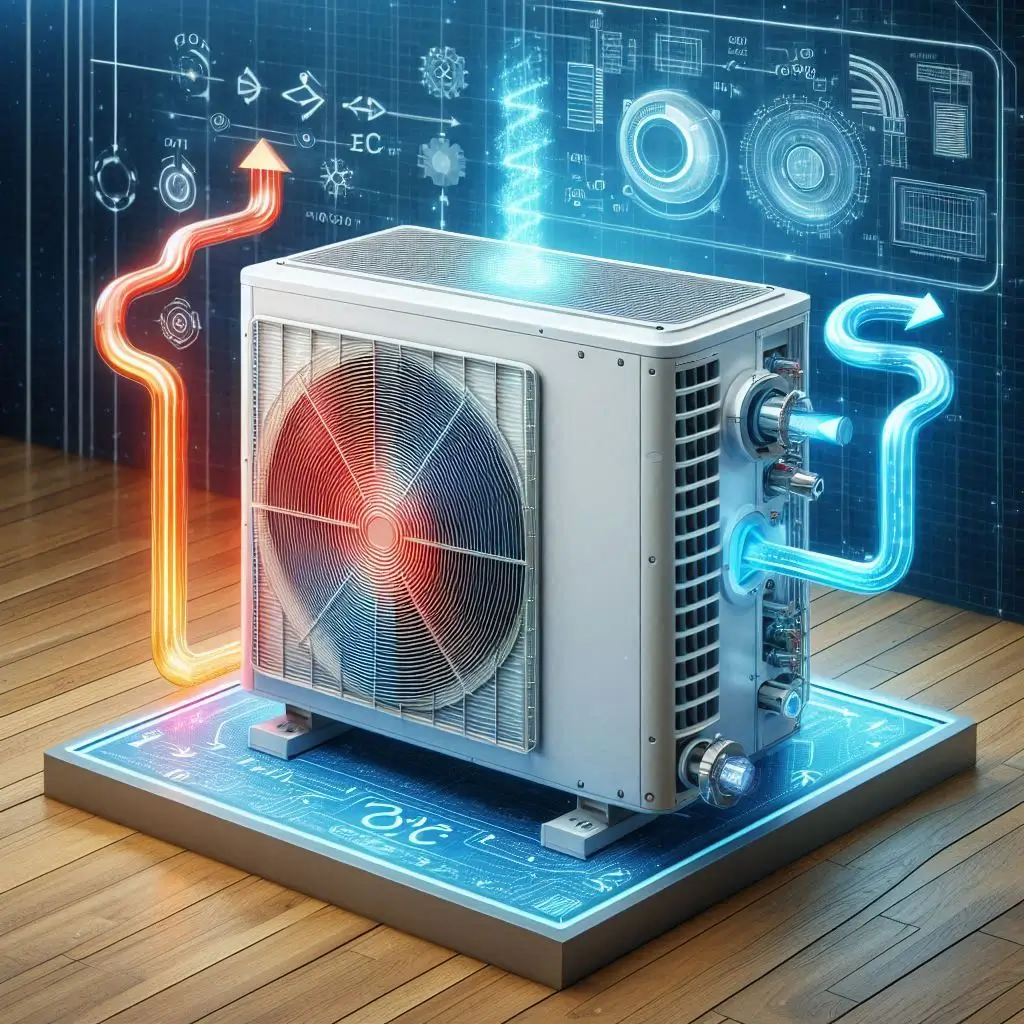
Ductless Mini-Split Systems
What are Ductless Mini-Split Systems?
Ductless mini-split systems are a flexible, efficient HVAC option that doesn’t require ducts. They consist of an outdoor unit and one or more indoor air handlers, connected by a refrigerant line.
Benefits of Ductless Mini-Split Systems:
- No Ductwork Required: Ideal for homes or buildings without existing duct systems or those looking for a more cost-effective option.
- Zoning Capability: Allows for individualized temperature control in different rooms or zones, increasing energy savings.
- Quiet Operation: The indoor units are typically quieter than window units or central systems.
- Energy-Efficient: These systems are designed to be highly energy-efficient, with modern models using inverter technology to adjust cooling or heating capacity as needed.

Hybrid Systems
What is a Hybrid HVAC System?
A hybrid HVAC system is a combination of a traditional furnace and an electric heat pump. It switches between the two based on efficiency and energy usage. In mild temperatures, the system runs on the heat pump, which is more energy-efficient. In colder temperatures, it switches to the furnace for better heating performance.
Benefits of Hybrid Systems:
- Energy Savings: Optimizes energy use by choosing the most efficient heating method based on outdoor temperatures.
- Enhanced Comfort: Ensures consistent indoor temperatures, no matter the season.
- Environmentally Friendly: A hybrid system offers an eco-friendly option by reducing reliance on fossil fuels when possible.
Factors to Consider When Choosing the Best HVAC System
When it comes to selecting the best HVAC system for your home, several key factors need to be carefully evaluated. Understanding these factors ensures that you make an informed decision that enhances your home’s comfort and energy efficiency. The right HVAC system not only saves you money but also improves indoor air quality and promotes long-term sustainability.
Climate Considerations
The climate in your area plays a critical role in determining the best HVAC system for your home. Different HVAC systems are better suited for certain climates, so it’s essential to choose one that can efficiently handle the temperature fluctuations in your location.
Why Climate Matters:
- Hot and Humid Climates: In areas with hot, humid climates, systems like central air conditioning or heat pumps are ideal. They provide both cooling and dehumidification, ensuring your home remains cool and comfortable.
- Cold and Dry Climates: For colder areas, a hybrid HVAC system or furnace might be necessary to handle extreme cold temperatures. Heat pumps also work well in moderate climates but may need a backup furnace in more extreme cold.
- Year-Round Comfort: If you live in a region that experiences both hot summers and cold winters, a heat pump can provide year-round comfort by offering both heating and cooling functions.

Home Size and Layout
Your home’s size and layout are vital factors when choosing an HVAC system. A properly sized HVAC system ensures efficient heating and cooling throughout the space. If the system is too large or too small, it can lead to poor performance, higher energy bills, and increased wear and tear on the equipment.
Why Home Size Matters:
- Larger Homes: Larger homes may require a more robust system, such as a central air conditioning system or a multi-zone ductless mini-split system. This ensures even distribution of temperature across all rooms.
- Smaller Homes: For smaller homes, a smaller system such as a single-zone ductless mini-split or a small heat pump could suffice, providing energy-efficient cooling and heating.
- Home Layout: The layout also influences the HVAC system choice. Open-plan homes may need fewer ducts or zones, while homes with multiple rooms and stories may benefit from a zoned HVAC system for greater control over temperature in each room.
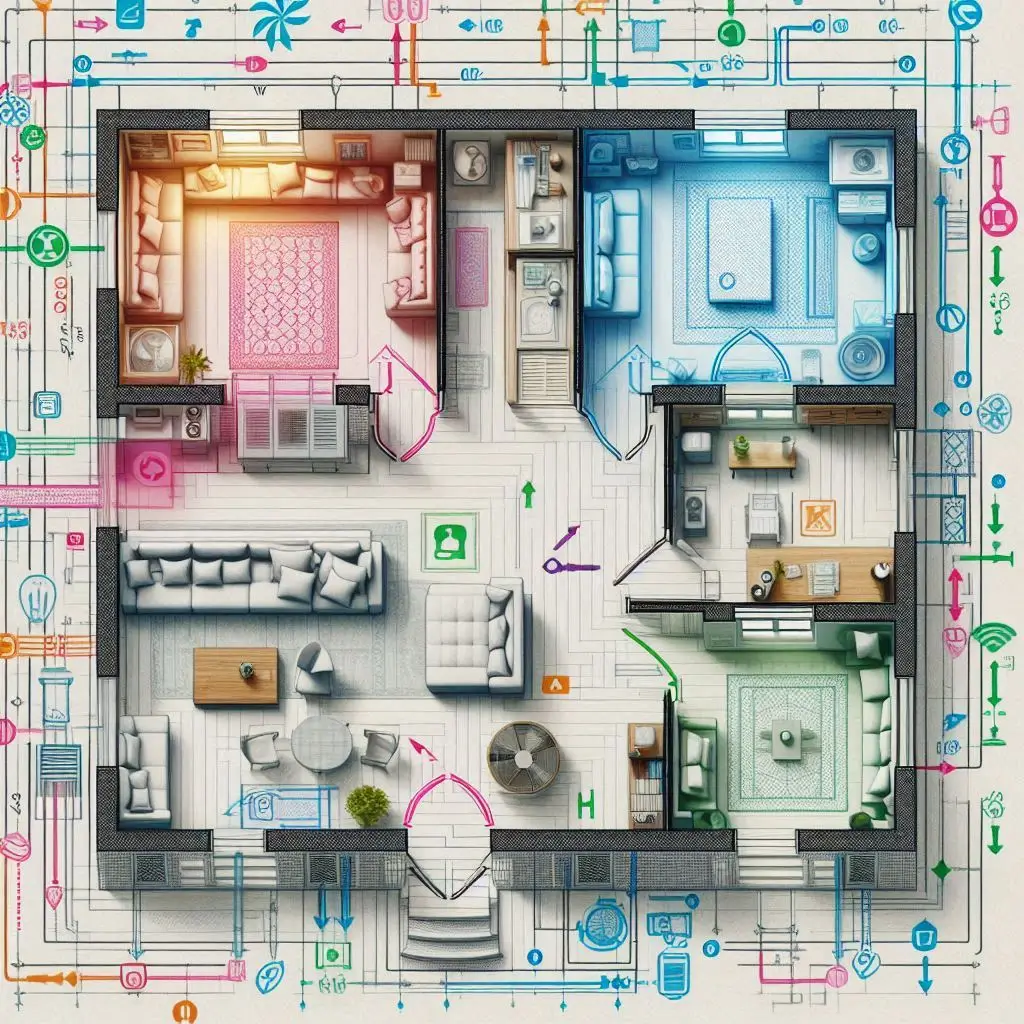
Energy Efficiency and Ratings
Energy efficiency is one of the most important considerations when choosing an HVAC system. A more energy-efficient system will help you save money on your utility bills while reducing your carbon footprint.
Key Energy Efficiency Metrics:
- SEER (Seasonal Energy Efficiency Ratio): The SEER rating measures the cooling efficiency of an air conditioning unit. Higher SEER ratings indicate more efficient systems that use less energy to cool your home.
- HSPF (Heating Seasonal Performance Factor): This rating is used to measure the efficiency of heat pumps. A higher HSPF means the heat pump will provide more heating output per unit of energy consumed.
- Energy Star Certification: Look for HVAC systems that have been certified by the U.S. Environmental Protection Agency (EPA) for their energy efficiency. Energy Star systems meet strict energy efficiency guidelines, ensuring you save on energy costs.
Why Energy Efficiency Matters:
- Lower Utility Bills: Energy-efficient systems consume less power, reducing monthly energy costs.
- Environmental Benefits: These systems are better for the environment, as they consume fewer resources and emit less carbon dioxide.
- Long-Term Savings: Although energy-efficient systems may have a higher initial cost, the savings on energy bills over time will often make up for this upfront investment.
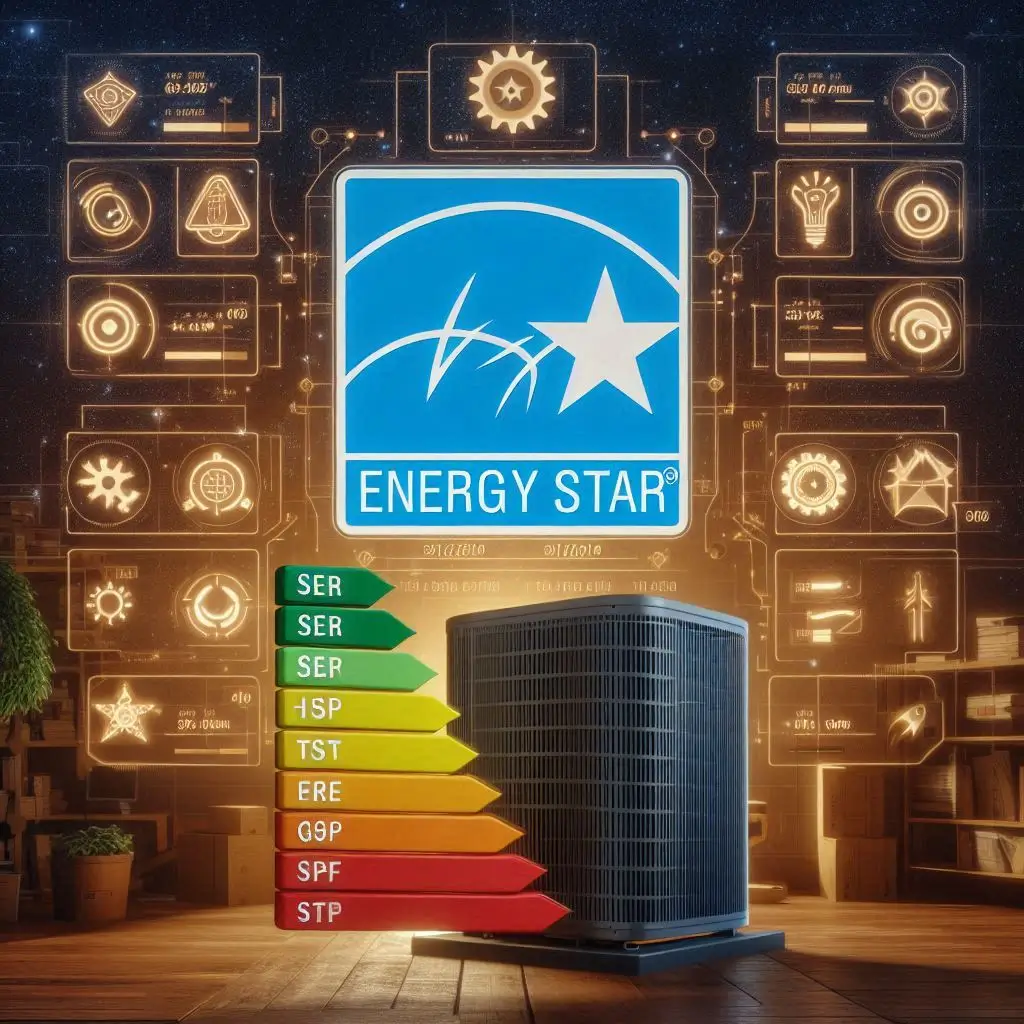
Existing Ductwork and System Compatibility
The condition and layout of your home’s existing ductwork are crucial factors in selecting a new HVAC system. If your home already has ducts in place, you may need to consider whether they are compatible with the new system or if upgrades are necessary.
Why Ductwork Compatibility Matters:
- Existing Ductwork: If your home has existing ducts, you can often install a central air system or a ducted heat pump. However, it’s important to inspect the ducts for any leaks, blockages, or damage that could reduce the system’s efficiency.
- Ductless Systems: If your home doesn’t have existing ducts or you’re looking for a more flexible solution, ductless mini-split systems are a great option. These systems are easy to install and don’t require the extensive ductwork associated with traditional HVAC systems.
- Upgrading Ducts: In some cases, you may need to upgrade or add ducts to ensure proper airflow. A professional HVAC contractor can assess your home’s current ductwork and recommend any necessary modifications.
Why System Compatibility Matters:
- Seamless Installation: Choosing a system that’s compatible with your current ductwork reduces installation time and costs.
- Improved Efficiency: Properly sized ducts ensure that air flows efficiently to each room, maximizing the HVAC system’s performance.
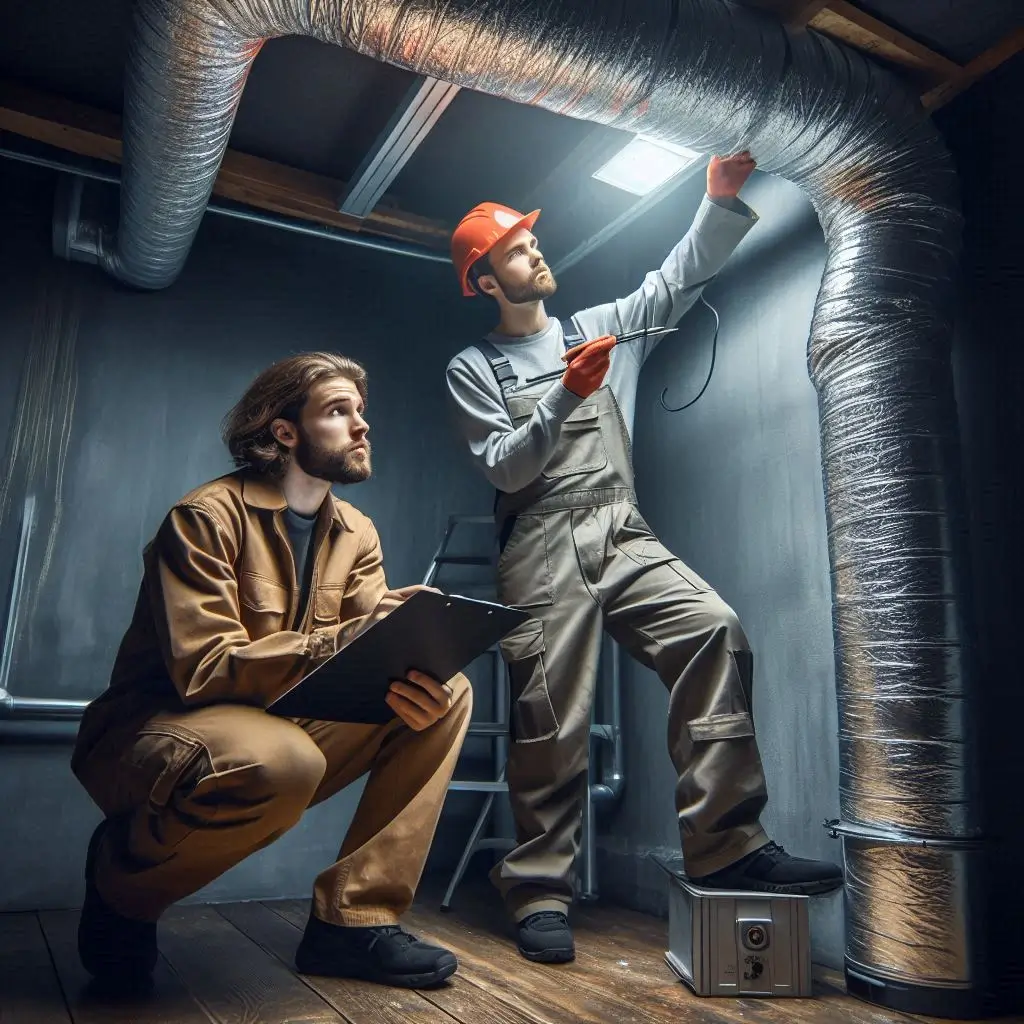
Proper Sizing for Your HVAC System
Selecting the proper size for your HVAC system is one of the most critical decisions to make when installing or replacing an HVAC system. An improperly sized system can lead to inefficiency, discomfort, and unnecessary expenses. Understanding why proper sizing matters, how to calculate the correct size, and common mistakes to avoid can help you get the most out of your HVAC investment.
Why Proper Sizing Is Crucial
Proper sizing ensures that your HVAC system will effectively heat and cool your home while operating efficiently. A system that is too small will struggle to reach your desired temperature, leading to constant operation, higher energy consumption, and frequent breakdowns. Conversely, an oversized HVAC system will short-cycle, turning on and off too frequently, causing unnecessary wear and tear and inefficiency.
Key Reasons Why Proper Sizing Matters:
- Energy Efficiency: A properly sized system uses less energy to maintain comfortable temperatures, reducing your monthly utility bills. An oversized system will consume more power than necessary, while an undersized system will need to run longer to keep up.
- Comfort: A correctly sized HVAC system provides consistent heating and cooling throughout your home. Systems that are too large or small often result in uneven temperatures and inconsistent humidity levels.
- Longevity of the System: When an HVAC system is sized correctly, it operates within optimal limits, reducing strain on components and extending its lifespan. Overworking a system can cause parts to wear out prematurely.
- Indoor Air Quality: A properly sized system helps to maintain adequate airflow, improving air circulation and contributing to better indoor air quality.
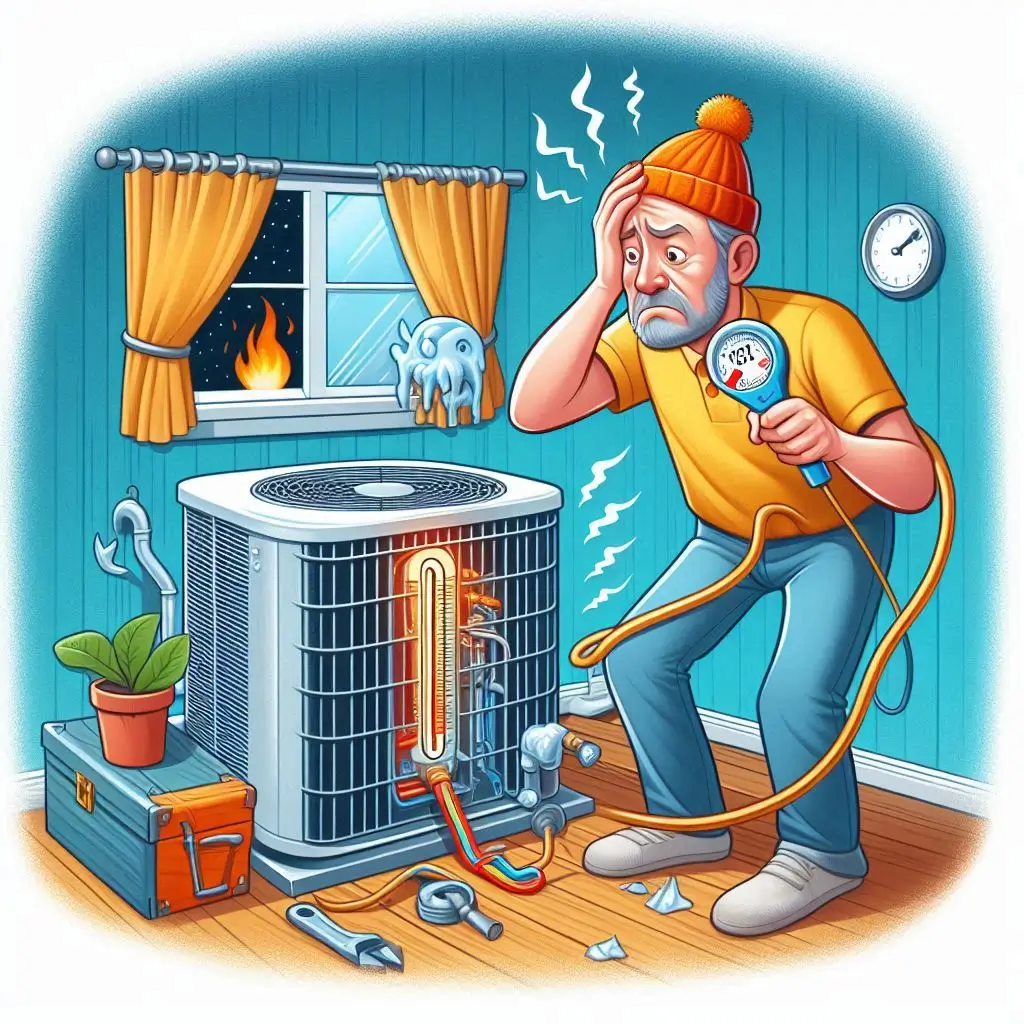
How to Calculate the Right Size HVAC System
To ensure that your HVAC system is appropriately sized for your home, it’s crucial to calculate the correct capacity. HVAC systems are measured in BTUs (British Thermal Units) for heating and tons for cooling, and these measurements correlate to the system’s ability to heat or cool a space.
Steps for Calculating the Right Size:
- Calculate the Square Footage of Your Home: Measure the total square footage of the areas that need heating or cooling. This can include living spaces, bedrooms, and common areas. Add the square footage of multiple levels if necessary.
- Consider Insulation and Efficiency: The quality of your home’s insulation, windows, and walls impacts how much heating or cooling you’ll need. Homes with poor insulation require more energy to regulate temperature, which may require a larger HVAC unit.
- Evaluate the Home’s Exposure to the Sun: Rooms with lots of windows or those that face the sun may need a larger cooling capacity due to heat gain. Homes with more shaded areas or fewer windows might need less cooling capacity.
- Use an HVAC Load Calculation (Manual J Calculation): Professional HVAC contractors often use a Manual J calculation, a detailed assessment tool that considers factors like climate, insulation, room layout, and more. This calculation helps to determine the exact number of BTUs or tons of cooling required for each space.
- Account for the Number of Occupants: The more people living in the space, the more cooling and heating capacity you’ll need. Human body heat, along with cooking and electronics, can increase cooling needs.

Common Mistakes to Avoid in Sizing
When sizing an HVAC system, there are several common mistakes that can lead to inefficiency and added costs. Being aware of these errors can help you make a better decision.
1. Choosing Based on Square Footage Alone: Many people simply base their HVAC system size on square footage, which is a common but inaccurate approach. The need for HVAC capacity goes beyond size, requiring a detailed assessment of the home’s insulation, exposure, and other factors.
2. Ignoring Insulation Quality: Homes with poor insulation or leaks in doors and windows may require larger systems to compensate for heat loss or gain. Failing to account for insulation quality can lead to oversizing or undersizing the system.
3. Not Considering Future Changes: If you plan on making significant changes to your home, such as adding an addition or renovating rooms, these factors should be considered when selecting the system’s size. Failing to account for future growth can result in an HVAC system that doesn’t meet the needs of your expanding home.
4. Oversizing or Undersizing the Unit: As discussed earlier, opting for a system that is too large or too small for the space can have detrimental effects. Over-sizing leads to energy waste and poor humidity control, while undersizing strains the system, making it inefficient.
5. Failing to Consult an HVAC Professional: A professional HVAC contractor can help you determine the right system size using detailed calculations. Relying on guesswork or inaccurate information often leads to poor results.
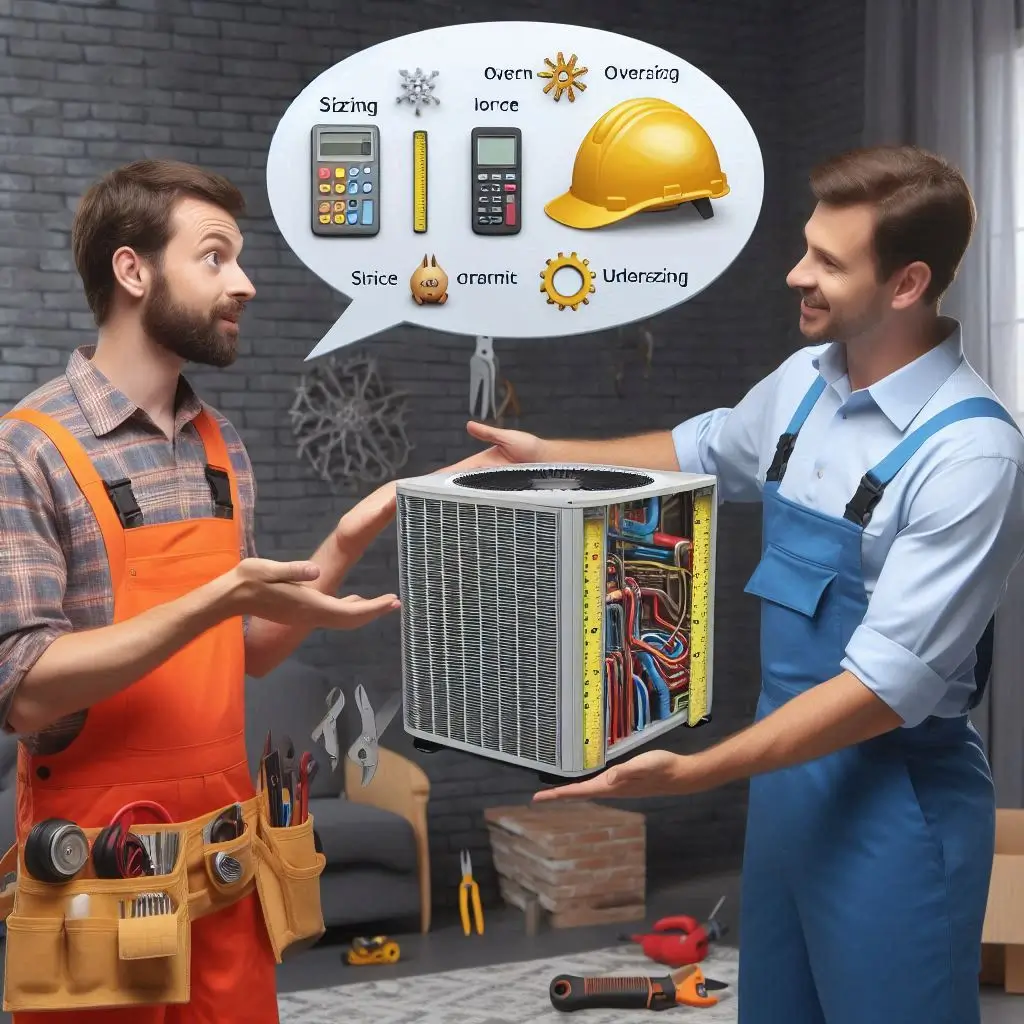
Cost and Financing Options for Your HVAC System
When considering a new HVAC system for your home, understanding the initial costs, long-term savings, and available financing options is essential to make an informed decision. A high-quality HVAC system may require a significant upfront investment, but it can provide substantial long-term benefits in terms of energy efficiency, comfort, and savings. Exploring various financing options can make the process more manageable, while focusing on maximizing the value of your investment will help you get the most out of your HVAC system over the years.
Initial Costs vs. Long-Term Savings
The initial cost of installing or upgrading an HVAC system can be daunting, but it’s important to weigh this against the long-term savings that an efficient system can offer. Understanding the relationship between upfront investment and future savings is essential when deciding on the right system.
Initial Costs:
- Equipment Purchase: The price of the HVAC unit itself can vary based on the type, brand, size, and features. For example, a high-efficiency system or a system with advanced technology like smart thermostats can have a higher initial cost than a basic model.
- Installation Costs: Professional installation is necessary for an HVAC system to function optimally. The installation cost can depend on various factors, including the complexity of the system, the type of system, and the size of the home. In some cases, additional work such as ductwork modification or new electrical wiring may be required.
- Additional Features: Systems with advanced features like humidity control, air purifiers, or multi-zone capabilities may also increase the initial cost.
Long-Term Savings:
- Energy Efficiency: One of the most significant long-term benefits of upgrading to a more energy-efficient HVAC system is lower energy consumption. Modern HVAC systems are built to minimize energy waste and maximize performance, reducing your utility bills.
- Lower Maintenance Costs: An efficient HVAC system tends to require less maintenance, leading to fewer repairs and longer system lifespan. Additionally, systems with better efficiency ratings tend to have warranties that can save you money on repairs.
- Tax Incentives: Some HVAC systems may be eligible for federal or state tax credits, rebates, or energy-efficient certifications. These incentives can help reduce the initial investment cost.

Financing Options for Your HVAC System
If the initial cost of an HVAC system seems too high, there are several financing options available to make the investment more manageable. Understanding your financing choices will help you choose the right option based on your budget and preferences.
1. HVAC Manufacturer Financing: Many HVAC manufacturers offer financing programs for customers, allowing you to purchase and install a system with affordable monthly payments. These programs often come with low or 0% interest rates for qualified buyers, making them a good option for those who want to avoid high upfront costs.
2. Personal Loans: A personal loan is another option for financing your HVAC system. With a personal loan, you can borrow a lump sum of money at a fixed interest rate, which is then paid back over time. This option can offer more flexibility than financing through the manufacturer, and many lenders offer competitive interest rates.
3. Credit Cards: If you have a credit card with a low-interest rate or promotional financing options, you may choose to finance your HVAC system through credit. However, be sure to check the terms, as high-interest rates can add to the overall cost of the system.
4. Home Equity Loans or Lines of Credit (HELOC): If you own your home and have sufficient equity, you may consider a home equity loan or line of credit. This option allows you to borrow money against the value of your home at a lower interest rate, making it an affordable financing solution for large purchases like an HVAC system.
5. Utility Company Financing Programs: Some utility companies partner with HVAC contractors to offer financing programs for energy-efficient systems. These programs may include rebates, discounts, or low-interest financing for customers who purchase energy-efficient HVAC units.
6. Government Financing Programs: In some areas, government programs provide financial assistance for energy-efficient home upgrades. These programs are designed to help homeowners reduce their carbon footprint and can be a good option for those looking to upgrade their HVAC system while reducing energy costs.

How to Maximize Value for Your Investment
To get the most value out of your HVAC system, it’s essential to consider both the initial costs and the long-term benefits. Here are some strategies to ensure you’re making a smart investment:
1. Choose an Energy-Efficient System: While the upfront cost of an energy-efficient HVAC system may be higher, the long-term savings in reduced energy bills can more than offset the initial investment. Look for systems with high SEER (Seasonal Energy Efficiency Ratio) ratings for cooling and AFUE (Annual Fuel Utilization Efficiency) ratings for heating. These systems will provide better performance and help lower energy consumption over time.
2. Schedule Regular Maintenance: Regular maintenance is key to extending the lifespan and efficiency of your HVAC system. Schedule annual inspections with a professional HVAC technician to clean filters, check refrigerant levels, inspect ducts, and ensure optimal performance. Well-maintained systems tend to operate more efficiently, which translates into lower utility costs.
3. Consider Smart Technology: Investing in a smart thermostat or zoning system can enhance the performance of your HVAC system, allowing you to control temperatures in different areas of your home. Smart thermostats can be programmed to optimize temperature settings based on your schedule, which helps to avoid energy waste and further reduce utility costs.
4. Take Advantage of Tax Credits and Rebates: Many energy-efficient HVAC systems qualify for tax credits or rebates. Research federal, state, and local incentives available in your area, and factor these into your budget to lower the total cost of the system. Be sure to keep documentation for tax purposes.
5. Plan for Future Upgrades: Consider any future upgrades or changes to your home. If you’re planning an addition or renovation, you might need a larger system to accommodate the increased space. Anticipating future needs ensures that your HVAC system will continue to meet your comfort requirements for years to come.

Frequently Asked Questions (FAQs)
When it comes to HVAC systems, homeowners often have several questions regarding their selection, efficiency, longevity, and the advantages of different types of systems. In this section, we’ll address some of the most common questions to help you make informed decisions about your HVAC system.
What Is the Best HVAC System for My Home?
Choosing the best HVAC system for your home depends on various factors including the size of your home, climate, energy efficiency needs, and budget. Here’s a breakdown of how to choose the right system for your home:
- Climate Considerations: If you live in an area with extreme temperatures, like hot summers or cold winters, a heat pump or a central air conditioning system might be ideal. Heat pumps are efficient because they work as both heaters and air conditioners, providing year-round comfort.
- Home Size: For larger homes, a central air conditioning system might be the best option, while smaller homes or apartments can benefit from a ductless mini-split system. Ductless systems offer flexibility and efficient cooling without the need for ducts.
- Energy Efficiency: If energy savings is a top priority, choose a high-efficiency HVAC system with high SEER and AFUE ratings. Systems with these ratings consume less energy, reducing your utility bills over time.
When selecting the best HVAC system, consider factors such as initial costs, long-term savings, and your home’s specific requirements to make an informed choice.
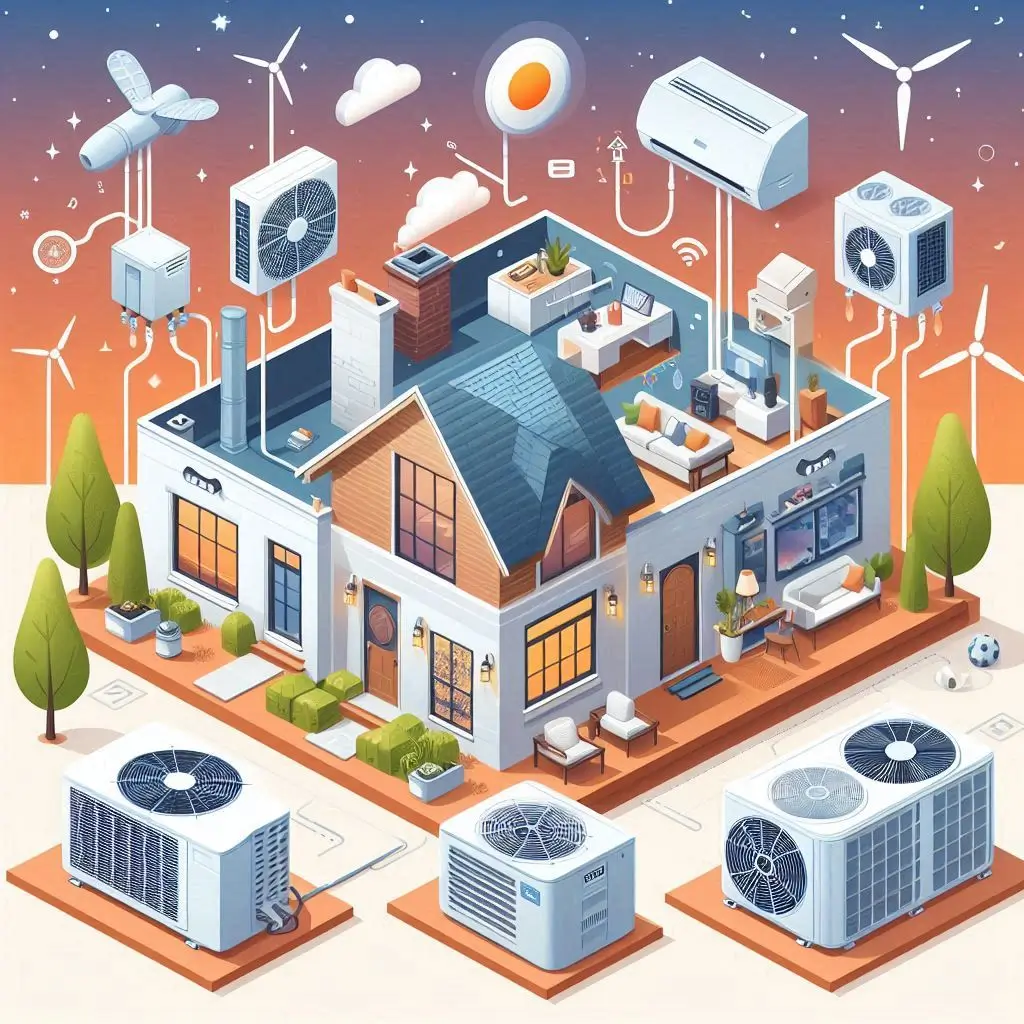
How Long Will My HVAC System Last?
The lifespan of an HVAC system can vary depending on several factors, including the type of system, frequency of maintenance, and usage. Here’s a general overview:
- Central Air Conditioning System: Typically lasts 12-15 years. Regular maintenance, such as changing filters and cleaning ducts, can extend its lifespan.
- Heat Pumps: These systems generally last 10-15 years, though regular maintenance can extend their life.
- Ductless Mini-Split Systems: These systems are known for their longevity, often lasting 15-20 years with proper care.
- Hybrid Systems: Similar to heat pumps, hybrid systems can last around 15 years, depending on usage and maintenance.
Pro Tip: Scheduling regular maintenance and addressing minor issues before they become major problems can help prolong the lifespan of your HVAC system.
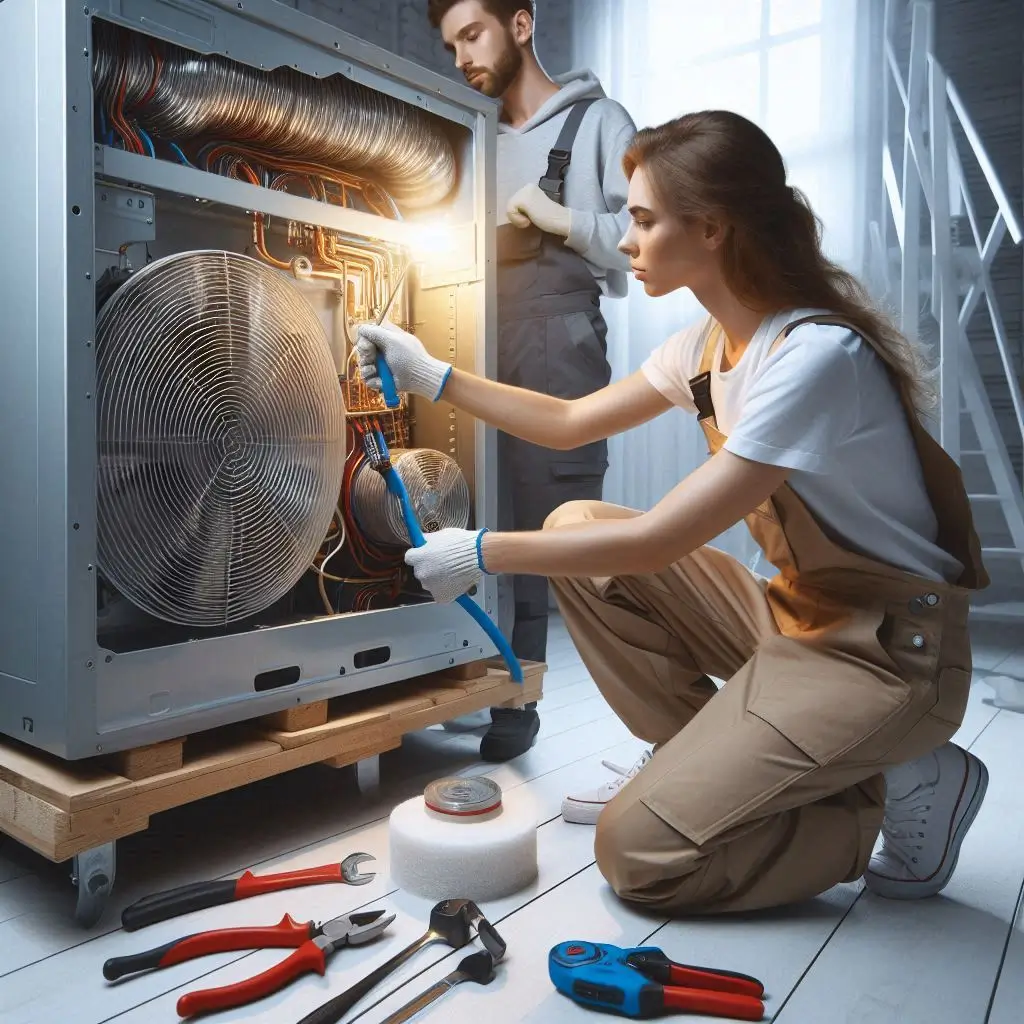
How Can I Improve My HVAC System’s Efficiency?
Improving your HVAC system’s efficiency can save you money on energy bills and ensure it works optimally. Here are several ways to boost your system’s performance:
- Regular Maintenance: Regular servicing by a professional technician ensures that your HVAC system is operating at peak efficiency. This includes cleaning filters, checking refrigerant levels, and inspecting key components.
- Upgrade to Energy-Efficient Systems: If your system is old or inefficient, upgrading to a high-SEER (Seasonal Energy Efficiency Ratio) system can drastically reduce energy consumption.
- Use a Programmable Thermostat: A smart or programmable thermostat allows you to control the temperature of your home based on your schedule, ensuring your system isn’t working harder than necessary.
- Seal and Insulate Ductwork: Leaky or poorly insulated ducts can lead to energy loss. Sealing gaps and insulating ducts can prevent energy waste, improving your system’s overall efficiency.
- Install Zoning Systems: Zoning allows you to control the temperature in different areas of your home independently, reducing the strain on your HVAC system and saving energy.
By implementing these tips, you can maximize the efficiency of your HVAC system and lower your utility bills.
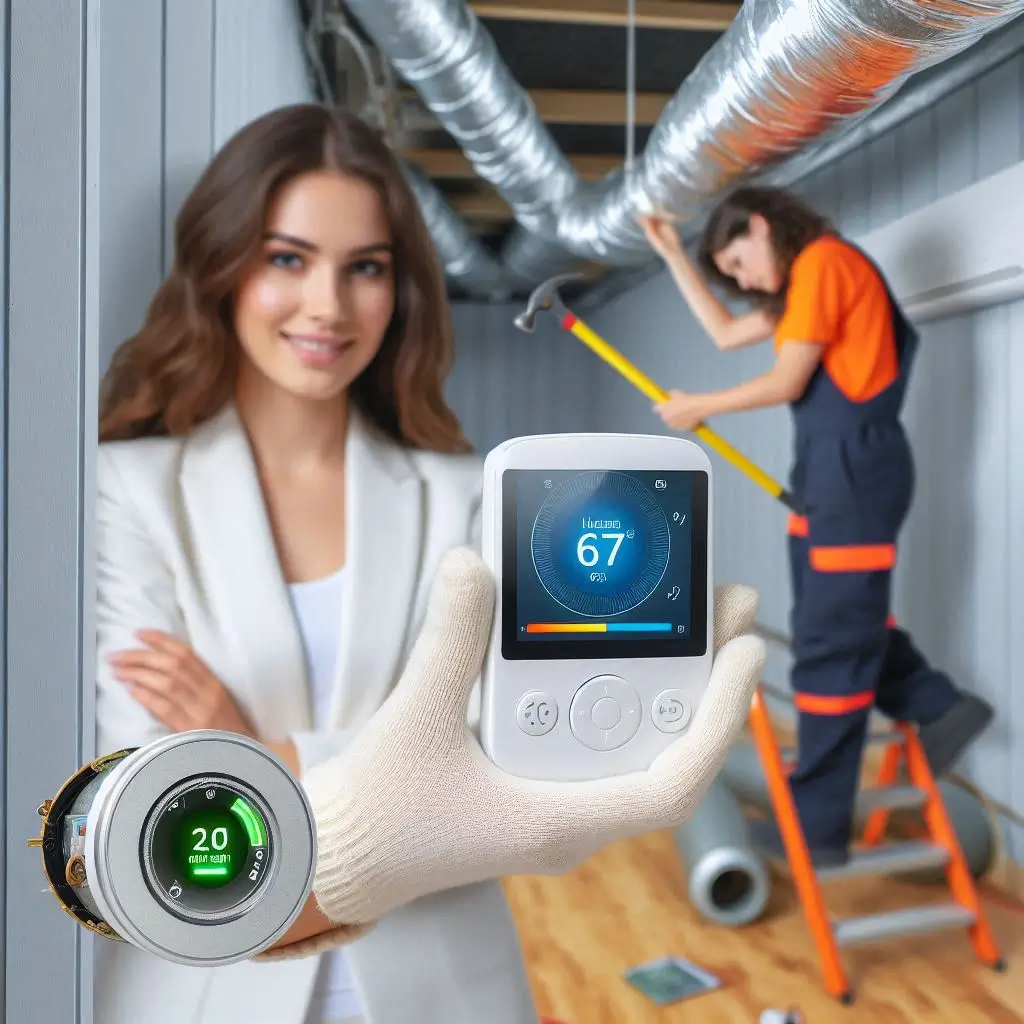
What Are the Benefits of Ductless HVAC Systems?
Ductless HVAC systems, also known as mini-split systems, offer several benefits over traditional ducted systems. These benefits make them a great choice for homes of all sizes and for homeowners looking for efficiency and comfort.
- Energy Efficiency: Ductless systems do not suffer from energy loss due to ductwork. In traditional systems, air loss through ducts can account for up to 30% of energy use. With ductless systems, energy efficiency is greatly enhanced.
- Zoning Capabilities: Ductless systems provide zoning capabilities, allowing you to set different temperatures in different rooms. This feature ensures that energy is not wasted in unused areas of the home.
- Flexible Installation: Ductless systems are ideal for homes that don’t have existing ductwork or for home additions. The installation process is quick and non-invasive, with minimal disruption.
- Improved Indoor Air Quality: Ductless systems come with advanced filtration options that can improve the air quality in your home by reducing dust, pollen, and other allergens.
- Quiet Operation: Unlike traditional systems that can be noisy, ductless units are designed to operate quietly, ensuring comfort without unwanted noise.
For homes with no existing ducts or for those looking to upgrade to a more efficient system, ductless HVAC is a great solution.

Conclusion
In conclusion, selecting the best HVAC system for your home is a crucial decision that involves considering factors like climate, home size, energy efficiency, and budget. Whether you opt for a central air conditioning system, heat pump, ductless mini-split, or hybrid system, ensuring proper sizing, installation, and regular maintenance is key to maximizing your system’s performance and lifespan. With the right choice, you can enjoy long-term comfort, lower energy bills, and improved air quality. Be sure to consult with HVAC professionals to guide you through the selection, installation, and maintenance processes, ensuring that your investment continues to deliver optimal results for years to come.

